Home | Women in Sport | Canadian Women in International Sport
Skaters
PreviousNext
Few Canadian sports heroes have attained the iconic stature of figure skating champion Barbara Ann Scott. After receiving her first pair of skates from her parents as a Christmas present, Barbara Ann joined the Minto Skating Club in Ottawa at the age of six. In 1940 she won the Canadian Junior Championships at the age of eleven, and from 1944 to 1948 became Canada's National Senior Champion. Between 1945 and 1948 Barbara Ann reigned as North American Champion, and in 1947 she captured both European and World Championship titles. In 1948 she defended both crowns and became the first Canadian to win a gold medal in Olympic figure skating in St. Moritz, Switzerland.
After becoming an Olympic champion in 1948 Barbara Ann Scott was revered as Canada's sweetheart, celebrated in countless news stories, parades and civic receptions. However, there was a dark side to celebrity. Enchanted by her physical beauty and effervescent personal charm, sports writers often exaggerated Barbara Ann's femininity at the expense of her athletic achievements, preferring to describe the champion as "a tiny exquisite doll."
In reality Barbara Ann Scott had achieved competitive success through intense training and hard work, dedicating herself to a training regimen that required her to skate for seven to eight hours every day. Forgoing normal social experiences like attending school, Barbara Ann worked with private tutors and spent her summer vacations in arenas, endlessly perfecting her skating technique. Her dedication and self-discipline paid off in an era when figure skating competitions included compulsory 'school' figures, which tested a skater's ability to trace intricate patterns on the ice. Figures could count for up to sixty percent of overall marks, and it was in this exacting aspect of competition that Barbara Ann truly excelled.
Beneath the glitter and lace, Barbara Ann Scott's fierce determination was anything but doll-like, and her pivotal importance as a role model for an entire generation of aspiring young female athletes in Canada cannot be overstated. Providing the spark of inspiration that empowered many young girls to become champions in their own right, Barbara Ann Scott's legacy endured long after she skated onto the Olympic ice in St. Moritz, a testament to one of the most influential athletes in the history of Canadian sport.
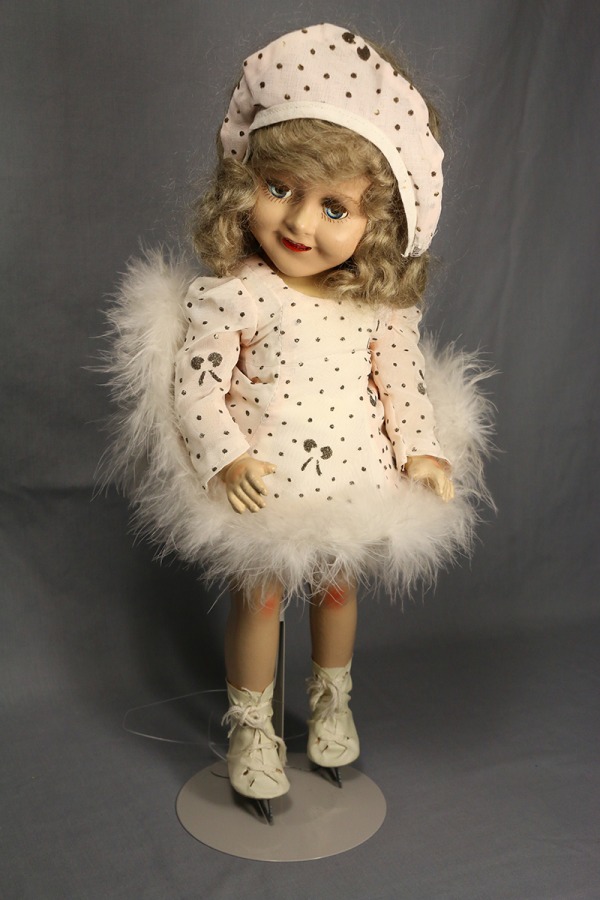
The Barbara Ann Scott doll was made by the Reliable Toy Company of Canada from 1948 to 1954. The composition doll wore a different figure skating costume each year of production and came with white skates and a letter from Barbara Ann. Part of the proceeds from the sale of the doll went to support underprivileged children.
Collection: Canada's Sports Hall of Fame
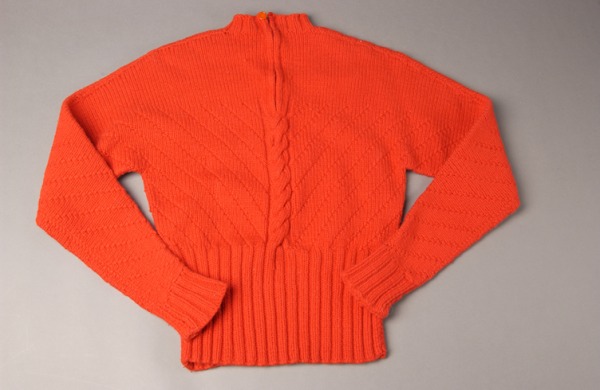
Barbara Ann Scott's family was a major influence in her life. They supported her throughout her years of training and competition. Her mother would hand knit her sweaters like the one seen here while she watched her daughter train. When Barbara Ann skated professionally at the Hollywood Ice Revue she ensured that a percentage of her earning went to aid crippled children. She continued to give back to the community throughout all her life, becoming a spokesperson for women in sport and for figure skating.
Collection: Canada's Sports Hall of Fame
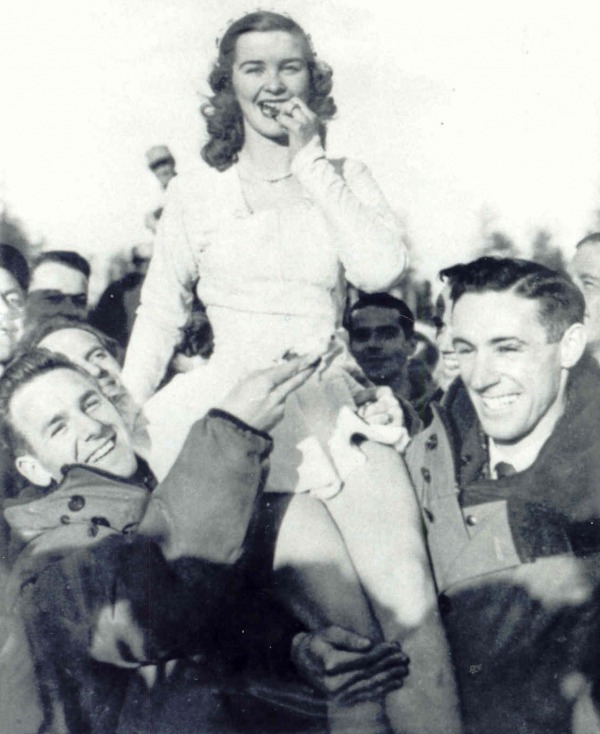
Barbara Ann Scott was hoisted on the shoulders of two hockey players Reg Schroeter and Ab Renaud, member of the RCAF Flyers gold medal ice hockey team, after she finished her program. When she won the World Championships in 1947 she had been presented with a convertible car by her home town of Ottawa. She had to return it in order to maintain her amateur status and eligibility to compete at the 1948 Olympic Winter Games. She turned professional afterwards and was finally able to accept the car.
Collection: Canada's Sports Hall of Fame
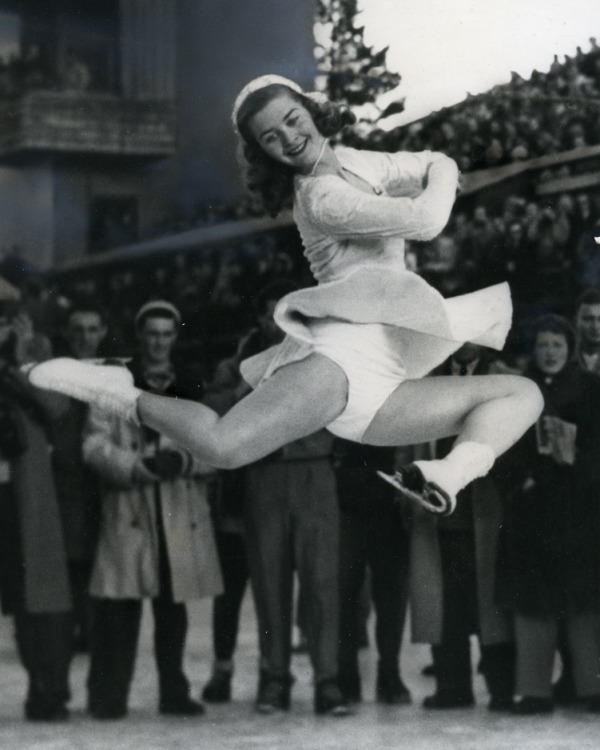
Barbara Ann Scott was the first woman to land a double Lutz jump in competition and she did it at the age of thirteen. Called Canada's Sweetheart by the press she was regarded as a role model for young women. The then Prime Minister of Canada, Lester Pearson, said she was a major factor in helping Canadians to recover from the era's post war gloom.
Collection: Canada's Sports Hall of Fame
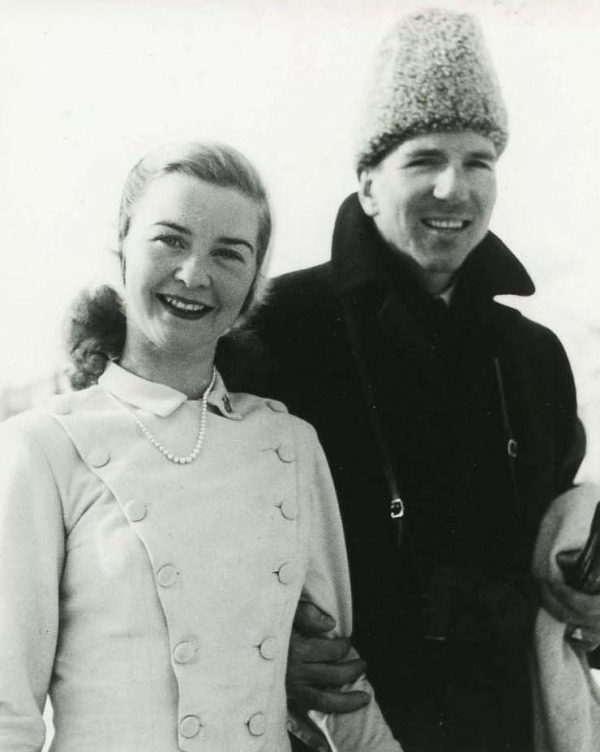
The ice conditions that Barbara Ann Scott faced at the 1948 Olympic Winter Games were very poor. The outdoor arena was also the venue for the ice hockey competition and the ice was in rutted condition from the games. Barbara Ann and her coach Sheldon Galbraith, seen here together, conferred over the conditions and adjusted her program accordingly. She forged new ground for skaters outside of Europe and put Canada on the international figure skating map.
Collection: Canada's Sports Hall of Fame
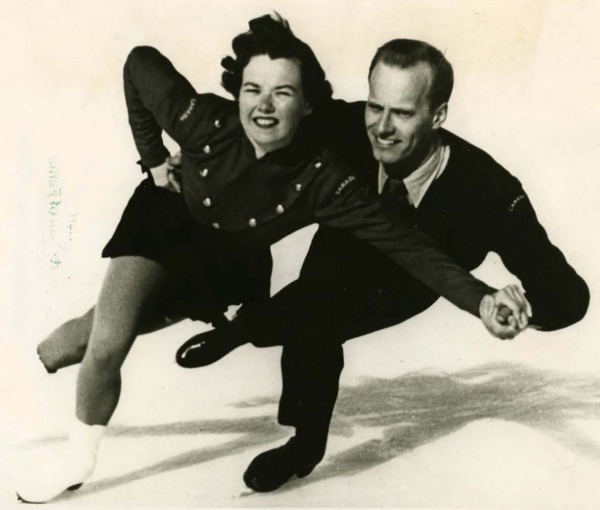
Frances Dafoe and Norris Bowden pushed the limits of pairs figure skating with their athletic ability and artistic elements. Considered by some judges to be "too athletic" they were the first to do a twist lift, throw jump, catch lift and pressure lift. They won a silver medal at the 1956 Olympic Winter Games in Cortina d'Ampezzo and two World Championships. Their courage and perseverance brought about a new era in figure skating and has empowered today's skaters to go even further.
Collection: Canada's Sports Hall of Fame
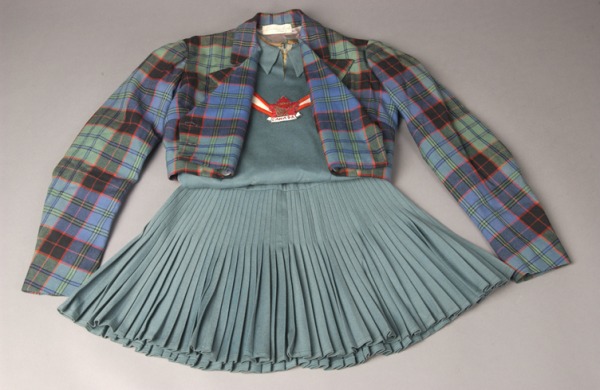
Frances Dafoe was an innovator in many aspects of her sport, from performance to costume design. At a time when training and competitions could be held outdoors or in a cold rink, she solved the problem of cold legs by having her skirt as a separate component to her costume. She could wear pants and then slip on the skirt when it was time to perform. She continued to give back to figure skating by becoming a judge and being a strong advocate for the sport.
Collection: Canada's Sports Hall of Fame
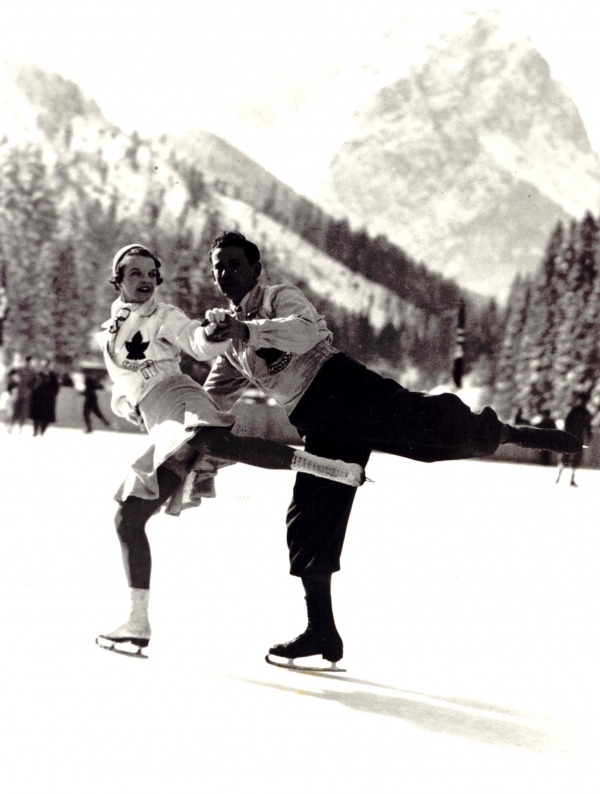
Canadian pairs skaters have competed at the Olympic Winter Games since 1924. Louise Bertram and her partner Stewart Reburn competed at the 1936 Olympic Winter Games in Garmisch-Partenkirchen and wore skating costumes that had the maple leaf crest. After the end of her competitive career, Louise continued to skate in Winter Carnivals throughout Eastern Canada and the United States. These skating shows were very popular and encouraged many young people in the audience to take up figure skating.
Collection: Canada's Sports Hall of Fame
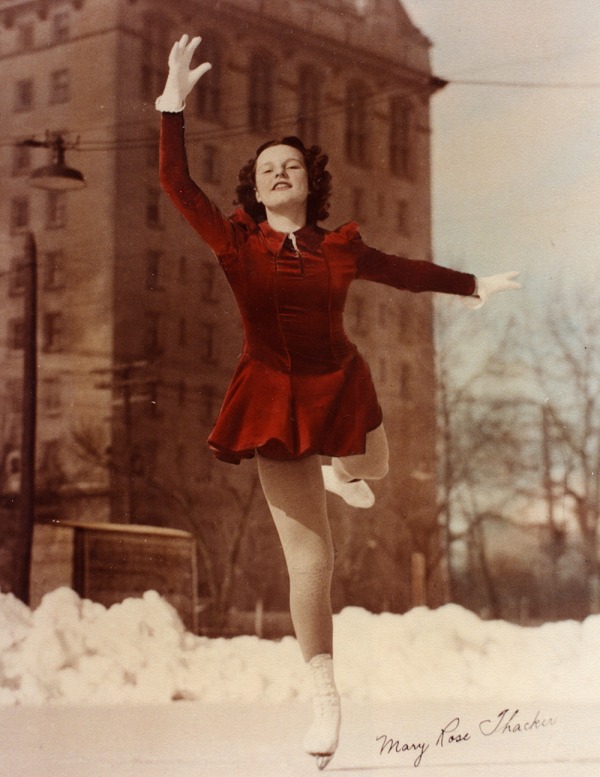
Mary Rose Temple Thacker started figure skating at the age of three and won her first Canadian title as a junior at age fourteen. She trained for eight hours a day to succeed. She was denied her chance to compete at a World Championship in 1940 due to the World War Two. Deciding that there was still challenges in figure skating, she became a coach and started her own figure skating school. She mentored many top skaters, including 1973 World Champion Karen Magnussen.
Collection: Skate Canada
Previous Next


